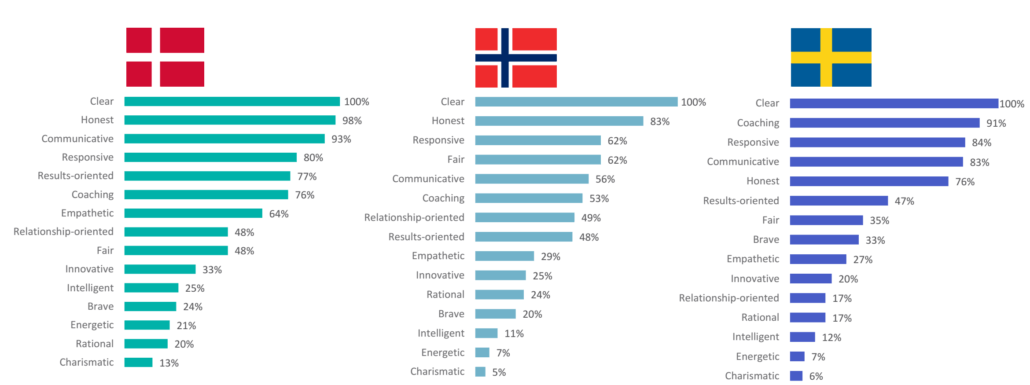Scandinavian leadership, benefits and challenges
By Tor Haehre, Political Advisor, Lederne Norway
Are there significant differences between Scandinavian leadership and leadership in other parts of Europe? If so, what are these differences, benefits and challenges, and are there as well, despite possible significant similarities, also differences in leadership among the three Scandinavian countries? These and other questions were raised at the CEC seminar on the “leadership of the future” and investigated in a survey of managers in Scandinavia.
The 3 sister organisations in Sweden, Denmark and Norway, members of CEC, conducted a joint survey in preparation for a CEC conference taking place in Stockholm in June 2017, after the survey was initiated by Ledarna Sweden. The results are highly relevant when it comes to the development of working life both in Scandinavia and other parts of Europe.
The survey was taken online by managers with membership in their country’s union with a total of 1559 interviews. The main results show us that there is a Scandinavian type of leadership with common values and traits. Scandinavian leadership is characterised by three central features:
- The first characteristic is a high level of employee involvement in the decision-making process
- The second is the short distance between managers and employees
- The third is the ‘freedom with responsibility‘, which means that the employee has ample space in which to take initiative and work independently

The values and styles of leadership that distinguish the countries should be regarded more as subtle distinctions rather than major differences. In Denmark, for example, leaders tend to delegate more, requiring employees to be very independent, whereas in Norway leaders place more of a focus on wellbeing and job satisfaction, and in Sweden more on coaching.
Democratic, relational and targeted leadership
Ultimately there are identified three different types of successful leadership that can be linked to each of the countries – Democratic leadership (Norway), Targeted leadership (Denmark) and Relationship-orientated leadership (Sweden).
In a nutshell, there are more common denominators with regard to approaches to leadership in Denmark, Norway and Sweden than there are differences. This also means that the countries face similar challenges when managers are practising their Scandinavian type of leadership. One of the challenges for organisations is balancing the need to be efficient and flexible, while at the same time involving employees in the decision-making process, which can be time-consuming.
Challenging responsibility
Another challenge is the possible lack of a clear framework and structure in non-hierarchical organisations. A third is how to create a safe and nurturing environment faced with employees who are suffering from stress and an ever-increasing need for them to take responsibility and be independent. There is a risk that the workplace created will only favour the most ambitious and self-driven, meaning that other personality types may be overlooked.
However, due to the fact that there since the 1960’s has been a well-developed so-called tripartite cooperation between the employers’ organisations, the employees’ organisations and the government, has to a large degree secured a relatively non-turbulent working life. There are of course conflicts and strikes also in Scandinavia, but they are normally solved by negotiations and without turbulent outcome, especially because of employee involvement in the decision making process. Because of this there is easier for the employees to establish an ownership to the process and the outcome compared to the more commanding working traditions which are to be found in some other parts of European working life.
Please find the study on scandinavian leadership here
Read more about CEC’s seminar on the future of leadership here



